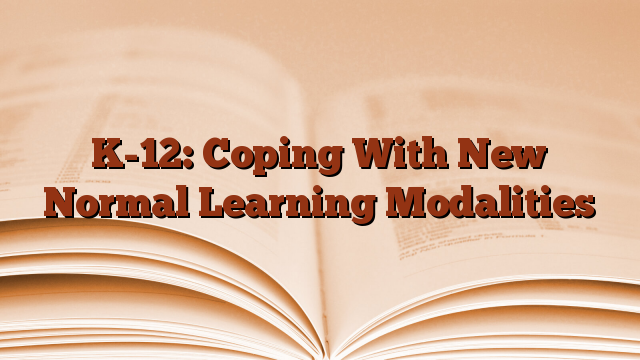It has now been over a year since face-to-face classes were suspended and completely discontinued when the COVID-19 pandemic hit in March 2019.
The learners were not allowed to go outside and had to continue their studies online or in modular mode in the following school year. With no one predicting the impact of the virus on the economic, educational and political landscape, people were caught in a dilemma where they don’t have a clear picture of what will really happen if classes stop, including work, in particular lockdowns have been imposed in areas hit hard by the virus.
Many died, but more managed and survived the adversity; However, depression entered the scenario and the students were not spared from this phenomenon. Yes, learners had to face uncertainties, but with determination and perseverance in the midst of the coronavirus, many had survived and are now thriving in the New Normal situation.
Well, let’s cut the narrative short and go straight to how learners are coping with the different learning modalities that are emerging through this new facility.
1. Modular
Printed study materials are provided for learners who do not have gadgets such as Android phones, tablets or laptops etc. and for those who have the technology, they are provided with a digitized version of the modules.
2. mixed
Two modalities combined, e.g. B. Radio or television with modular or online learning. Depending on the availability of technology and the creativity of teachers, parents and local governments in providing the necessary support such as internet connection, load and other essential factors to ensure learning continuity.
3.Online
This is where a learner needs to have the necessary gadgets to interact with teachers and co-online learners. This type of modality requires more resources, patience and so on due to the weak internet signal.
4.Hybrid
Combination of selected face-to-face, online and modular modules depending on the factors the learners are in in relation to their learning realities. If they have the technology, they could take online courses, receive modular ones or something similar to keep their education continuously relevant, updated and meaningful towards the end of the school year.
Imagine the difficulties learners have in far away areas where there is no internet signal unless they could get to a higher level and risk their life and limbs just for that purpose. These challenges require the utmost attention from local government on the fringes of the political landscape, providing the necessary support to learners so that their education is not impacted by this COVID-19 pandemic. Nothing is impossible when the parties involved work together. Every effort becomes a blessing to unite and rally against ignorance by providing all necessary resources for our learners.
Yes, it takes a whole village to raise a child. Let this village respond to the needs of our children especially during this difficult time. Applause!
Thanks to Larry Icabandi Nabiong

Leave a Reply